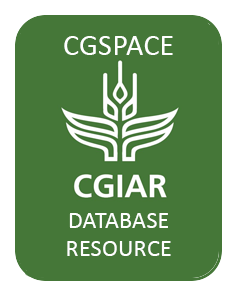Climate shocks to agriculture are threatening food security, especially in developing countries. Poverty and malnutrition are rising rapidly. Therefore, we must urgently transform our agricultural systems to be productive, sustainable, and equitable, and to contribute fully to lowering…
Climate impacts in Sub-Saharan Africa are severe and will increase. Agriculture is a cornerstone of the economies of most countries and yet is dominated by climate-vulnerable rainfed systems. Meeting the food demands of the growing African population will require significant adjustments in food…
Diamonds in the Delta (DiD) is an international research-action network of scholars, water professionals and civil society advocates who are concerned about how climate change compounds problems of flooding and subsidence in delta cities. We – the people in the network – are united in our…
In the Anthropocene, climate impacts are expected to fundamentally change the way we live in, and plan and design for, our cities and landscapes. Long-term change and uncertainty require a long view, while current planning approaches and policy making are mostly short-term oriented and are…
In a context of a rapidly changing livability of towns and countryside, climate change and biodiversity decrease, this paper introduces a landscape-based planning approach to regional spatial policy challenges allowing a regime shift towards a future land system resilient to external pressures.…
Link to the full toolkit: <a href="https://bit.ly/Foresight_Training_Toolkit">https://bit.ly/Foresight_Training_Toolkit…;
The Foresight for Future…
One of the 34 themes of the spatial datasets of Directive 2007/2/EC INSPIRE is ‘land use’, rightly described independently of ‘land cover’. Laws in most countries, apart from the Netherlands, do not consider the electronic form of plans as a legally binding document. As far as the elaboration…
One of the 34 themes of the spatial datasets of Directive 2007/2/EC INSPIRE is ‘land use’, rightly described independently of ‘land cover’. Laws in most countries, apart from the Netherlands, do not consider the electronic form of plans as a legally binding document. As far as the elaboration…
This study highlighted the importance of farmers’ understanding of the climate change effects, and identified recommendations on how to target women and enhance support services to increase the adaptive capacity of smallholder farmers. However, measures to increase women’s participation…
This info note summarizes the objectives, scope, and intervention logic of the livestock component of the PDET Routes project, which is implemented in four municipalities in Caquetá. The conditions that converge there, such as the high and growing rate of deforestation, environmental impacts,…
Nationally Determined Contributions (NDCs) are policy instruments, mandated under the Paris Agreement, to set out a country’s selfdetermined plans to curb greenhouse gas (GHG) emissions and enhance resilience by 2030. They are bottom-up processes in which countries contextualise and self-…
This brief summarizes findings of a project entitled “Food Security in Developing Countries: Gender and Spatial Interactions’†undertaken by researchers from the University of Alberta. The project uses a large cross-sectional dataset from the Integrated Modelling Platform for Mixed Animal…





